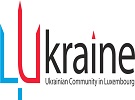
On Tuesday 3 June 2025, HelloSafe published its index of the safest countries for worldwide travel, with Luxembourg listed as seventh safest in 2025.
HelloSafe.lu is an online platform providing Luxembourg residents with tools to compare various insurance products, including travel, health and visa-related coverage. Its HelloSafe Index is designed to assess the overall safety of countries around the world through an in-depth analysis based on a set of 35 criteria grouped into five main categories. The index assigns each country a points score, with a lower score indicating a higher level of safety.
According to its report, Iceland is currently the safest country in the world, with a score of 18.23 points out of 100, ahead of Singapore (19.99 points) and Denmark (20.05 points). Luxembourg registered a score of 21.30 points. The report also noted that twelve of the fifteen safest countries in the world are located in Europe. In contrast, the report listed the Philippines (82.32), Colombia (79.21) and Mexico (78.42) as the three least safe countries in the world in 2025.
In relation to Europe, the report ranked Luxembourg as 6th safest. The top five were made up of Iceland, Denmark, Austria (20.3), Switzerland (20.5) and the Czech Republic (21.2). France was ranked 4th worst with a score of 36 points, followed by Greece (36.56), Ukraine (48.42) and Russia (75.65). In general, the report regards Europe as the safest continent for travellers from around the world, with European countries occupying 30 places among the 50 safest countries in the world.
HelloSafe noted that the data utilised for its HelloSafe Index is drawn from official reference sources, including various United Nations (UN) agencies, the World Bank and numerous international research organisations.
The five categories of criteria used for the HelloSafe Index are as follows:
1. Occurrence of natural disasters: this category examines the frequency and severity of natural disasters such as earthquakes, tsunamis and floods, as well as climate change risks such as sea level rise;
2. Violence in society: this section assesses the levels of crime, violence and political instability within society. It considers indicators such as perceived crime rates, the number of homicides and the impact of terrorism;
3. Involvement in internal or external armed conflicts: this category measures the involvement of countries in armed conflict, whether within or outside their borders and assesses relations with neighbouring countries;
4. Health infrastructure: this part analyses the capacity of countries' health systems, including hospital infrastructure, per capita health spending and the availability of medical personnel;
5. Militarisation of the country: this section examines the degree of militarisation of countries and considers military spending, the presence of heavy and nuclear weapons, as well as participation in international peacekeeping missions.








